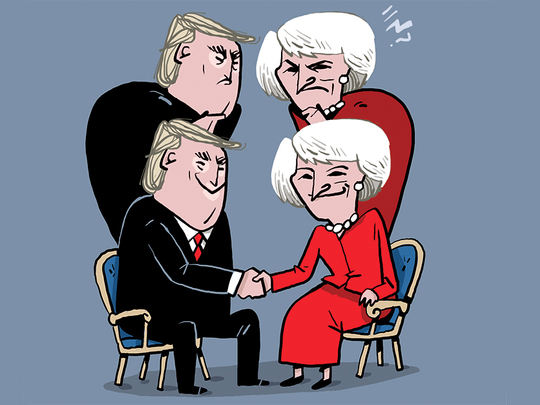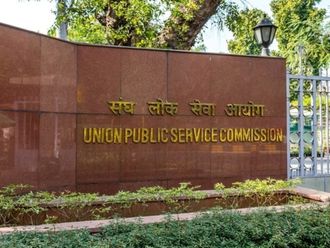
Donald Trump, the United States President, finished up on Friday the official leg of his first presidential tour of the United Kingdom. Even by his own standards of disruptive diplomacy, the trip was often off-message seemingly undermining UK Prime Minister Theresa May at virtually every turn.
Not only did Trump declare the UK to be in “turmoil”, following several Cabinet resignations last week, but he also undermined a key facet of May’s Brexit policy by questioning whether a UK-US free trade agreement is possible under her preferred pathway to leaving the European Union (EU); while also praising former foreign secretary Boris Johnson who may yet launch a challenge against May in the coming months for the keys of 10 Downing Street.
Even before his latest outbursts, Trump’s presidential trip had been plagued by controversy with significant public protests taking place, especially in London. While the tour has been scaled back from the originally planned state visit in these circumstances, it had still been hoped by May it could help breath new life into the long-standing ‘special relationship’.
Trump, whose mother was born in Scotland (where the US president spent the last weekend), appears to value the close historical ties between the two nations, and May was the first world leader to meet him last year after he was sworn into office. At that time, Trump called May “his Maggie”, drawing comparisons with the political bond forged between former US president Ronald Reagan and former British prime minister Margaret Thatcher.
Despite the many political differences between Trump and May — on the face of it, significantly larger than those between Reagan and Thatcher — both leaders say they welcome a constructive partnership building on the traditional ties between the two nations founded on demographics, religion, culture, law, politics and economics. For May, the rekindling of this special relationship, in a post-Brexit context, could potentially help flesh out her aspirations for a new “global Britain”.
Yet, a key challenge for her in hosting the visit has not just been Trump’s disruptive diplomacy, but also the significant UK public opposition to the trip. So much so that the tour was largely kept away from London and focused instead on Blenheim Palace (Winston Churchill’s birthplace); Chequers (the countryside home of the UK prime minister); and Windsor Castle where Trump saw Queen Elizabeth.
May hoped a key focus for discussions would be a potential US-UK trade deal in coming years. She calculated that if she could showcase strong support for such an agreement from Trump, it would represent a win in her battle to show that the nation can, post-Brexit, potentially swiftly secure trade deals with key partners outside of the EU.
Yet, Trump undermined this agenda asserting that a new US-UK trade deal may not be possible under the terms of May’s preferred route to Brexit. This contradicts the prime minister’s view and also gives political oxygen to her critics on the right wing of the ruling Conservative Party that she is seeking to compromise too much with Brussels over the UK’s exit and that this will complicate, if not make impossible, the task of securing new trade agreements across the globe.
Another key agenda item in the Trump-May talks was security and defence, which has long been at the core of the special relationship given the very close partnership between the two nations in areas such as intelligence. So while this is a terrain in which there was more agreement between the two, including over the need to continue the counter-terrorism battle against Daesh, tensions probably surfaced in private, including over Russia.
Trump has openly courted Russian President Vladimir Putin who he is meeting in Helsinki today for a summit. May was keen to find out Trump’s real bottom lines on Russia and, in the words of Thatcher, seek to “stiffen his spine” against what she perceives as the real and present Russian security threat. She will have reminded him about the recent incident in Southwest England that saw the alleged Russian attempted assassination of Sergei Skripal and his daughter. May is a strong defender of Nato and confirmed London would, under its Article 5 responsibilities in that organisation, come to the aid of any Eastern European country attacked by Moscow — an issue that Trump has so far given less clear-cut answers to.
Part of the reason for May’s inquiry in this area relates to the mixed messages coming from Trump and his senior team since he assumed the presidency. On the one hand, he appears to believe Russia is not a serious threat to the US, and that there is scope for rapprochement. Specifically, he perceives there are common interests over issues such as combating terrorism. Yet, US Defence Secretary James Mattis has said that “Russia is raising grave concerns on several fronts”. This includes trying to “break the Northern Atlantic alliance [Nato] ... which needs integrated steps — diplomatic, economic, military and the alliance steps ... to defend ourselves where we must”.
Given the multiple uncertainties ahead in the Trump presidency, May will have sought in private to air her frustrations with him and play the role of a candid friend in a bid to get closer to the mercurial president to try to make the relationship work as smoothly as possible given his volatility. This may provide some protections for bilateral relations in what could be a rocky period of international relations to come, even if strong personal chemistry continues to fail to take root between the two leaders.
However, while this may be a sensible strategy, at least initially, it is not without risk, especially given Trump’s erratic nature and polarised standing in United Kingdom opinion. While seeking the potential upside in the new relationship, May would be wise not to overestimate the UK’s ability to shape US power, nor be blind to the fact that Trump’s America First outlook may — ultimately — care little for core UK interests.
Andrew Hammond is an Associate at LSE IDEAS at the London School of Economics.








